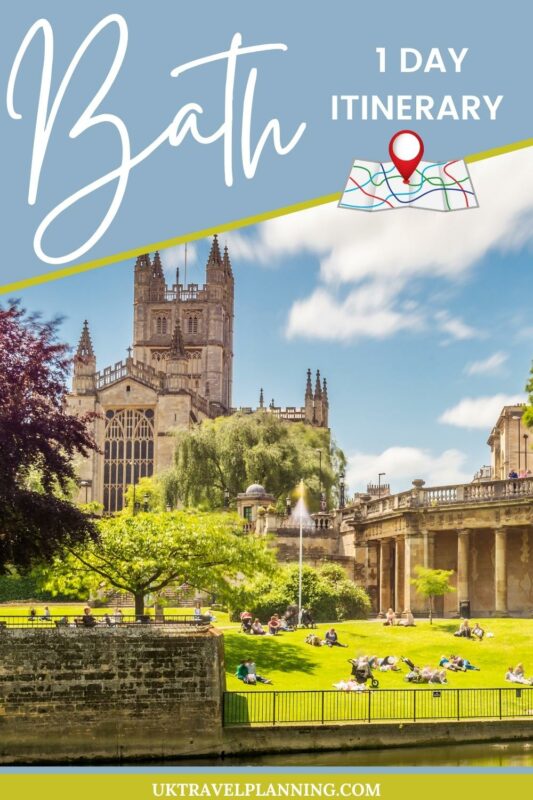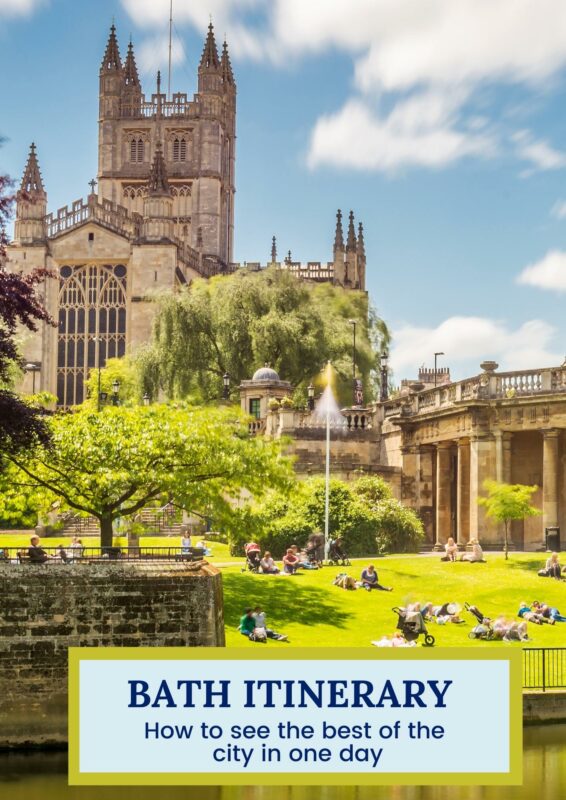Are you looking for the best one-day itinerary for the English city of Bath? In this article, you will find the perfect Bath day trip itinerary with all the information you need to plan your visit.
If you’re looking for day trip ideas from London, consider travelling to Bath. It’s only 100 miles to the west of London and is a charming city that can be easily experienced in a single day (though if you can we do recommend staying for longer)
In 1987, Bath was named a UNESCO World Heritage Site, making it the only UK city with that prestigious distinction. The honour was not surprising, given Bath’s richly unique history and culture.
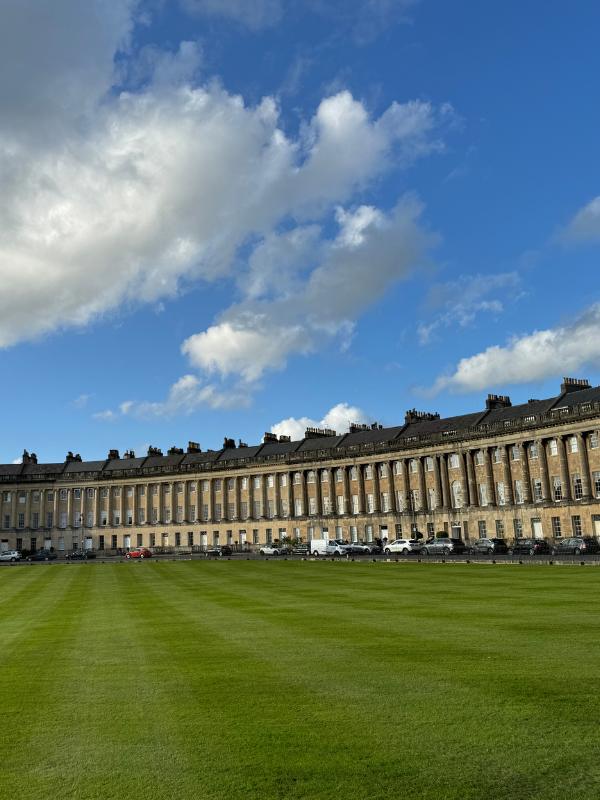
- Recommended day tours to Bath from London
- Visiting Bath – an overview
- Bath itinerary – how to see the best of Bath in one day
- First Stop — The Roman Baths
- Second Stop — Bath Abbey
- Third Stop — Sally Lunn’s Eating House
- Fourth Stop — The Pulteney Bridge
- Fifth Stop —The Circus
- 🌟 BATH TRAVEL RESOURCES 🌟
- Sixth Stop — The Royal Crescent
- Decision Time
- Seventh Stop —The Jane Austen Centre
- Eighth Stop — The Pump Room
- Best tickets and tours in Bath
- One day in Bath Map
- Practical information to help plan your Bath day trip
- Read more about visiting Bath
Recommended day tours to Bath from London
- Small group tour – The English Bus (use code UKTP5 for a 5% discount)
- Private tour – My Tailored Tour
Visiting Bath – an overview
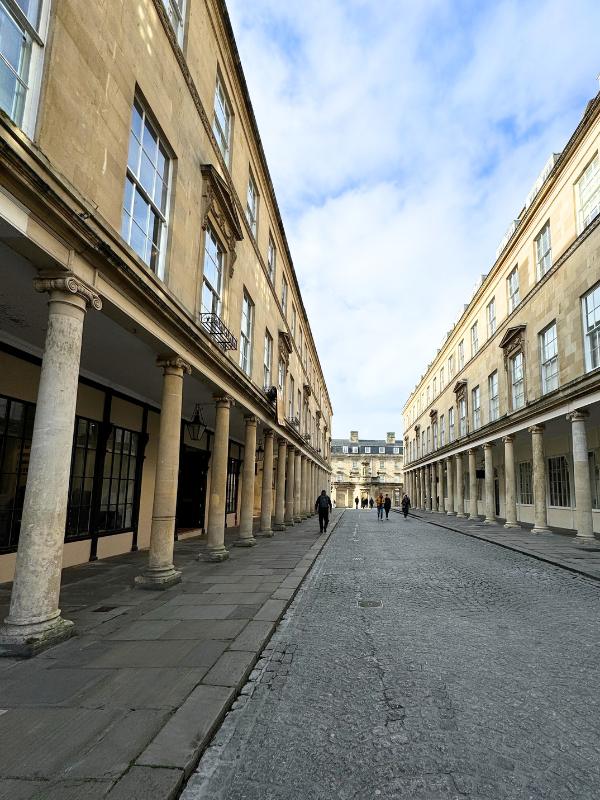
For the last 2,000 years, its natural thermal springs, which give the city its name, have attracted people looking to take advantage of the water’s medicinal properties. The Romans and Celts might have been the first to make the pilgrimage to Bath but they certainly weren’t the last.
Consequently, Bath is home to various historical attractions like the Roman Baths. It is also home to some of the most impressive Georgian architectural triumphs in the entire UK.
Lucky for visitors, Bath is a walking city, meaning its main attractions are all relatively close to one another and is therefore small enough to explore on foot.
What follows is a quintessential Bath day trip itinerary for a leisurely self-guided walking tour that will allow you to see all of the most popular sights.
Follow along, and we can help you make the most of your time in this fascinating and remarkable city. At the end of the article, there is also a handy map of this Bath itinerary.
Tip – If you prefer a private tour of Bath (including day trips) we recommend booking with Daniel of Bath Insider Tours. For a group tour we recommend this 2-hour tour which covers the Roman Baths, the best of Bath’s Georgian architecture, and its ancient heritage & vibrant modern culture. Or this hop on hop off sightseeing tour where you will learn all about Bath from the audio commentary aboard.
| Tours & Tickets | Best for | Book here |
|---|---|---|
| Bath Insider Tours (local guide Daniel) | Private tours | Book here |
| Jane Austen Centre | Jane Austen fans | Book here |
| 1.5 hour guided walking tour | First-time visitors to Bath | Book here |
| ⭐️ Jane Austen Tour + City Highlights | Jane Austen fans | Book here |
| Boat trip & walking tour | Families & first-time visitors | Book here |
| ⭐️ Bridgerton film locations walking tour | Bridgerton fans | Book here |
| Hop on Hop off bus tour | First-time visitors to Bath | Book here |
| Self-Guided Treasure Hunt around Bath | Groups | Book here |
⭐️ Book one of the starred Brit Movie Icon tours and receive an exclusive 10% discount using code UKTRAVELPLANNING10 at checkout!
Bath itinerary – how to see the best of Bath in one day
First Stop — The Roman Baths
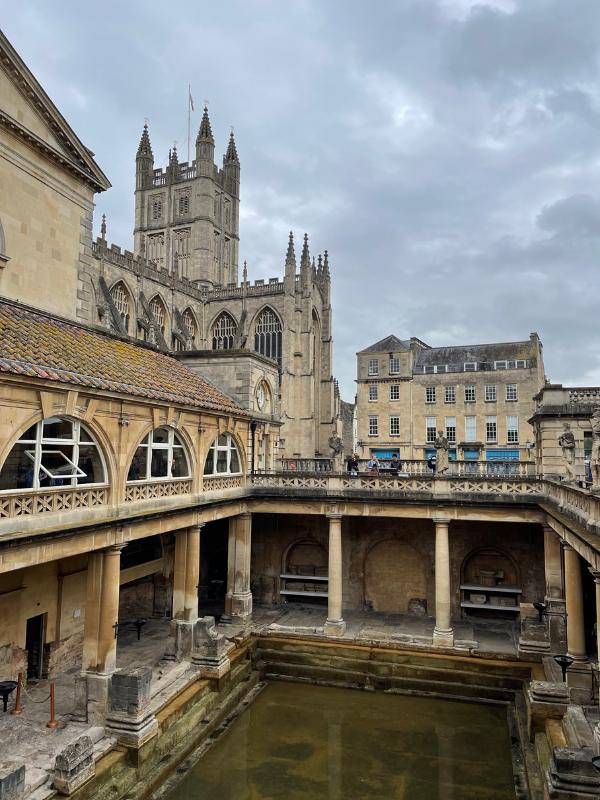
The best place to begin your tour of Bath is in the city centre, where you will find perhaps its most famous attraction: the Roman Baths.
Dating all the way back to 70AD, the Roman Baths were a multi-building complex built on top of the region’s thermal springs. They were a popular place to gather not only for bathing but for socialising as well. Back in the day, if there was gossip to be discussed, it would likely be overheard within the walls of the Roman Baths.
Though today some of the Roman baths complex is in ruins, other sections are amazingly well preserved and can provide insight into how people lived and socialised. Walk along the 2,000-year-old pavements as you explore the changing rooms and plunge pools from days gone by.
There is also an interactive museum on-site appropriate for all ages which details the Baths’ fascinating history. There will even be a chance for you to sample the springs’ mineral-rich water if you are so inclined.
As it’s your first stop on the tour, it is crucial that you arrive at the Baths right as it opens, as it tends to get very busy as the day goes on.
On weekdays, they open at 10:00 a.m. but on weekends they open an hour earlier at 9:00 a.m.
Check online, as their hours will change on and around any holidays.
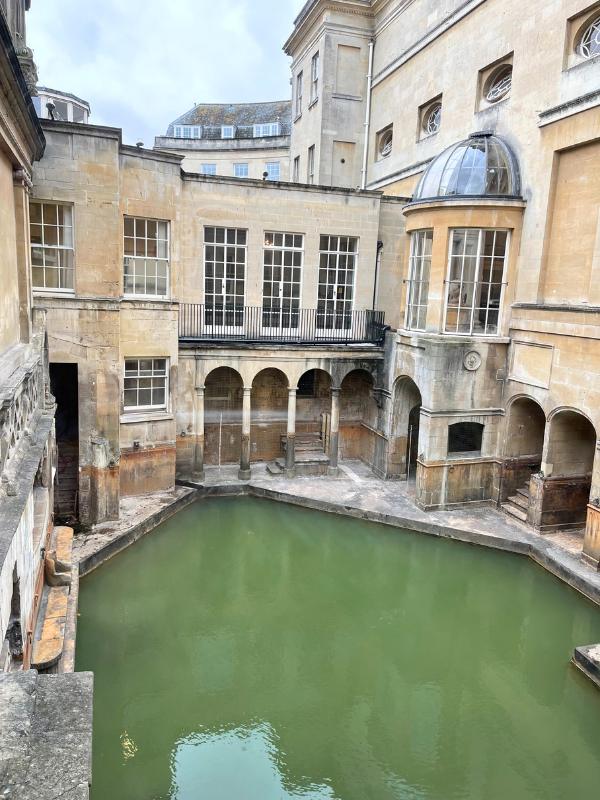
Second Stop — Bath Abbey

Just an easy, one-minute walk from the Roman Baths, is the 7th-century Bath Abbey, the parish Church of England. For at least 1,000 years, it has been a sight of Christian worship, having been ruined, rebuilt, reimagined and expanded many times in its history.
Today, it is a breathtaking structure with multi-story stained glass windows and soaring architecture that is truly a sight to behold. Though it is a working church, visitors can venture inside and admire its inspiring high ceilings and wide-open spaces. There are information placards throughout that explain the surroundings and detail the history.
If you’re up for it, climb the 200 plus steps up to the tower to see stunning views of the city and countryside beyond. Don’t forget to take plenty of pictures!
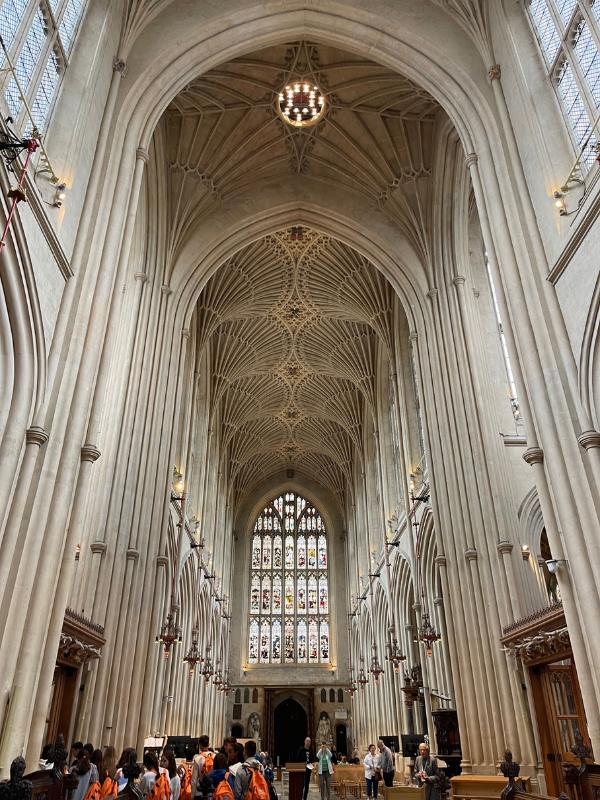
Third Stop — Sally Lunn’s Eating House
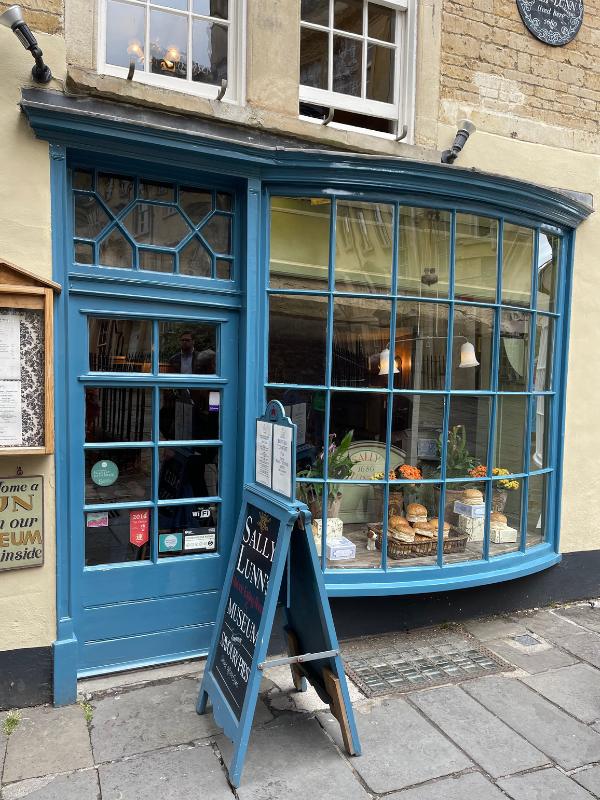
If your legs are tired from that climb up and down the Bath Abbey tower, perhaps you’re ready for a little respite. Just a two-minute walk from Bath Abbey is Sally Lunn’s — a must-visit for any Bath one-day itinerary.
Relax for a while over some tea, cakes or maybe even one of their world-famous Bath buns — the light and airy local delicacy born right at this very teahouse.
At Sally Lunn’s, you’ll be able to soak in a little bit of the local history. The building itself is historic — its fireplaces and chimneys have been dated as far back as 1482 when it may have served as a dormitory for monks.
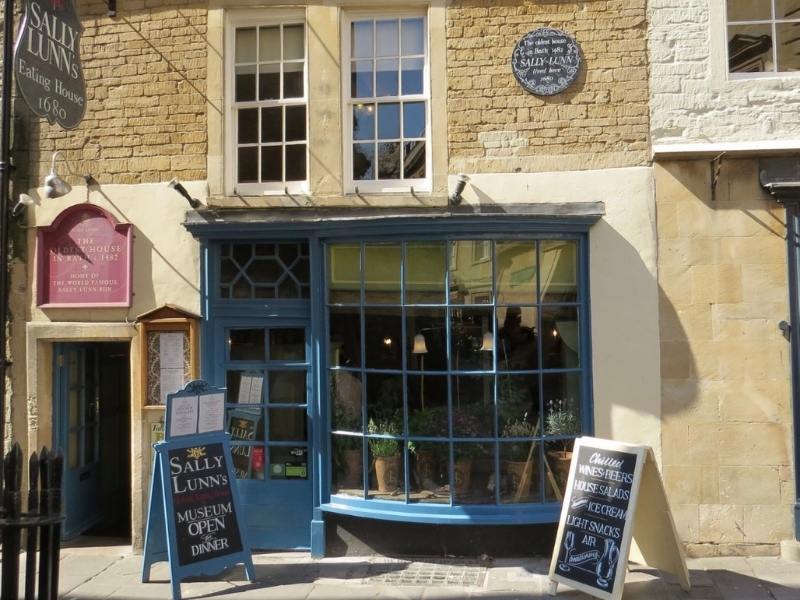
Eventually, the building became a bakery and in 1680, Sally Lunn herself appeared there looking for work. She was a Huguenot refugee from France and impressed everyone by baking her famous brioche-style buns that were destined to become famous.
When you’re finished enjoying yours, you can actually descend into the building’s basement and see the medieval oven used so long ago. It is part of a tiny kitchen museum that is well worth visiting, especially for those interested in culinary history.
Admission to the museum is free as long as you’ve eaten in the restaurant. Now that you’ve had your fill and are fully recharged, it is time to carry on to the next stop.

Fourth Stop — The Pulteney Bridge
From Sally Lunn’s, stroll by the edge of the Parade Gardens and along the River Avon. In less than four minutes, you will have arrived at one of the most photographed bridges in the UK.
Built in 1769, it is a remarkable stone bridge that has built-in shops lining either side, one of the only bridges in the world with that feature. It is named for Frances Pulteney, the wife of an 18th-century landowner, William Johnstone Pulteney, who was at one time the wealthiest man in Great Britain.
Take your time exploring the bridge and poke around in all the quaint shops. When you are feeling like it’s time to get off of your feet, why not jump on a boat?
From the bridge, you can embark on a scenic, one-hour boat ride down the River Avon. The cruise glides along the Avon Valley toward the village of Bathhampton and then travels back again.
On the way you’ll see charming scenery, including local wildlife like kingfishers, herons and swans. These boat trips make quite the impression on most visitors. When you get home, if anyone asks you what to do in Bath, you’ll surely tell them that they should take a cruise!
If you prefer to have a guided tour around Bath it is possible to combine a walking tour with a cruise. Click here for more information.
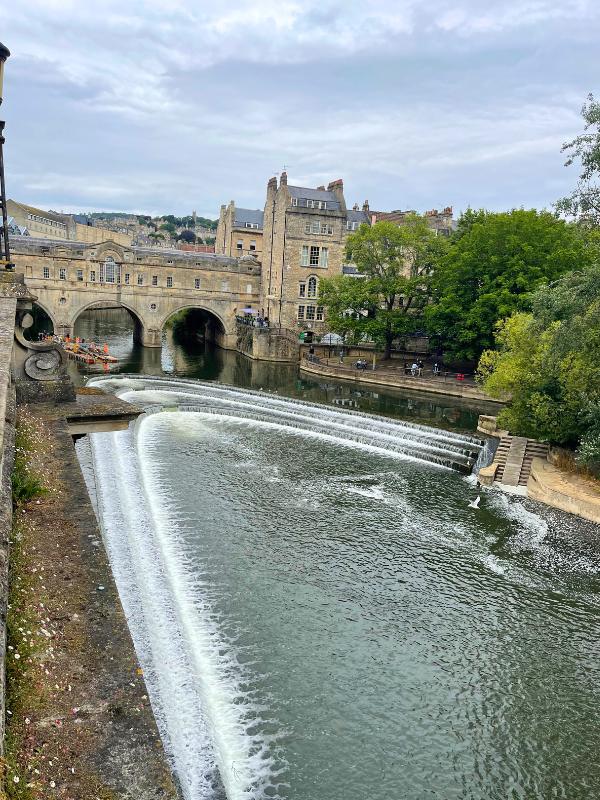
Fifth Stop —The Circus
Now that you’ve arrived back on dry land, it is time to make your way toward the Royal Crescent to see some quintessentially Georgian architecture.
Before you get there, however, and while you’re in an architectural frame of mind, it’s only a 10-minute walk to the Circus. The circus, like with elephants and acrobats? No! It’s a ring of identical Georgian townhouses designed by John Wood the Elder.
He started building them in 1754 but due to his untimely death, the project had to be finished by his son John Wood the Younger several years later.
These magnificent buildings are a monument to man’s ingenuity and are simply marvellous to admire, especially from the shaded park in their middle. While you’re there, consider taking a peek at the Assembly Rooms, which are only steps away.
They were designed by John Wood the Younger in 1769 as a venue for gala civic events like balls or concerts. They’ve been used for a variety of purposes throughout the years, including as a movie house in the 1930s. Today, they have been restored and are open for visitors.
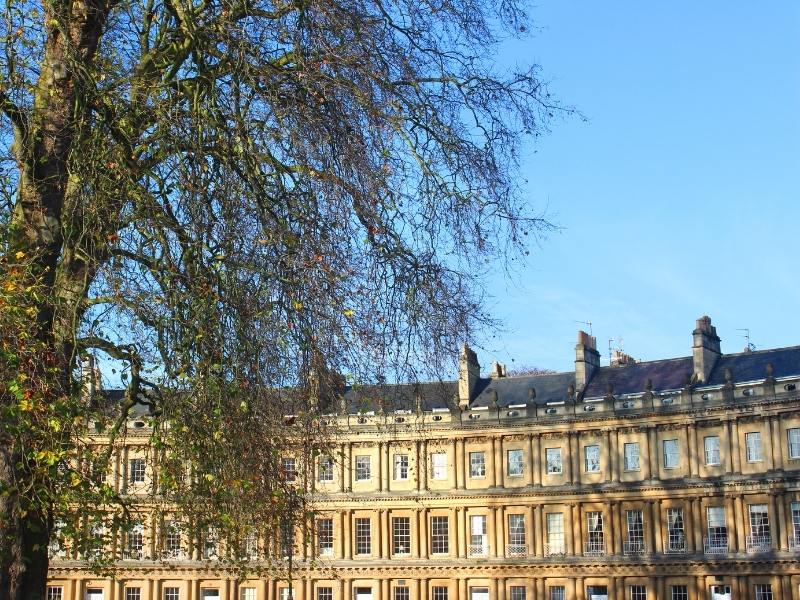
🌟 BATH TRAVEL RESOURCES 🌟
🏨 Book your accommodation – Booking.com or VRBO
🎟 Book group tours & tickets in Bath – Get Your Guide or Viator
⭐️ Book a private tour of Bath – Bath Insider Tours
🚗 Car Hire – Discover Car Hire
📖 UK Travel Itinerary Planners Ebook – Buy here
********
Sixth Stop — The Royal Crescent
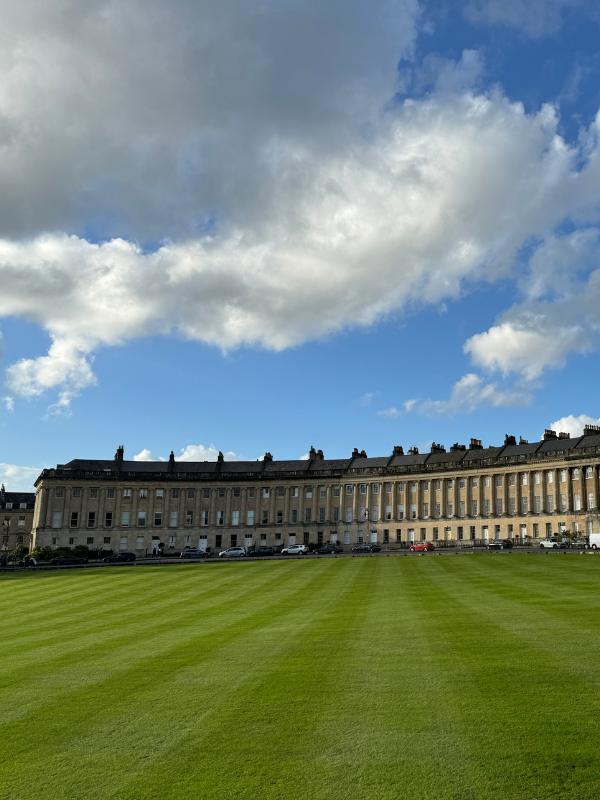
Originally called “The Crescent,” this Georgian architectural marvel gained its “royal” title in the late 1700s when Prince Frederick, Duke of York and Albany, visited the property and briefly stayed there. It probably also looked like a building fit for royalty, what with its 114 Ionic columns.
Today’s visitors will see 30 identical luxury townhouses that were built for the elite aristocracy of Bath. Over the years, their interiors have been refurbished and repurposed but their Palladian facades have remained unchanged.
They form a gracefully curving 500-foot structure that surrounds a lovely green park, making a dramatically large crescent shape.
For those curious about 18th-century living, why not venture into No. 1 Royal Crescent, a museum dedicated to capturing what it would have been like to live and work in one of these buildings back in the 1700s.
As the first townhouse completed, No. 1 Royal Crescent remains decorated, both upstairs and downstairs, exactly as it would have been back in the day, complete with furnishings and household objects.
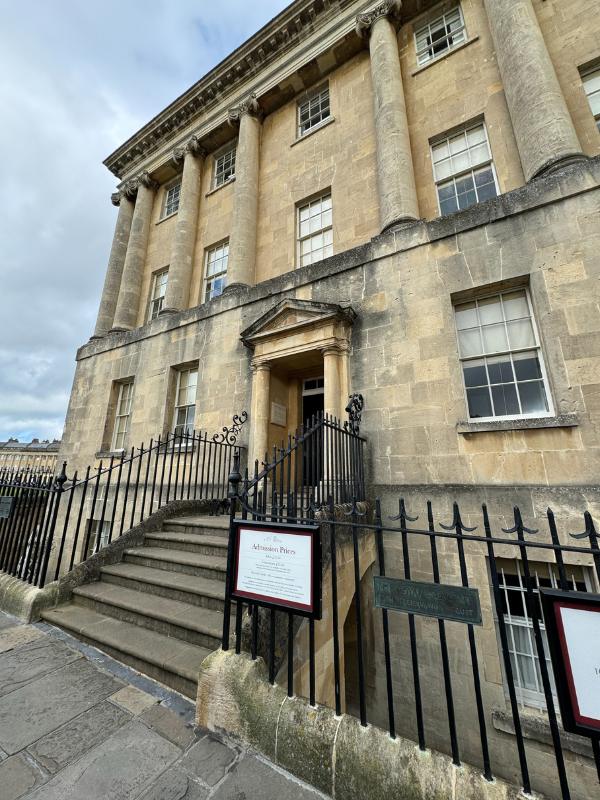
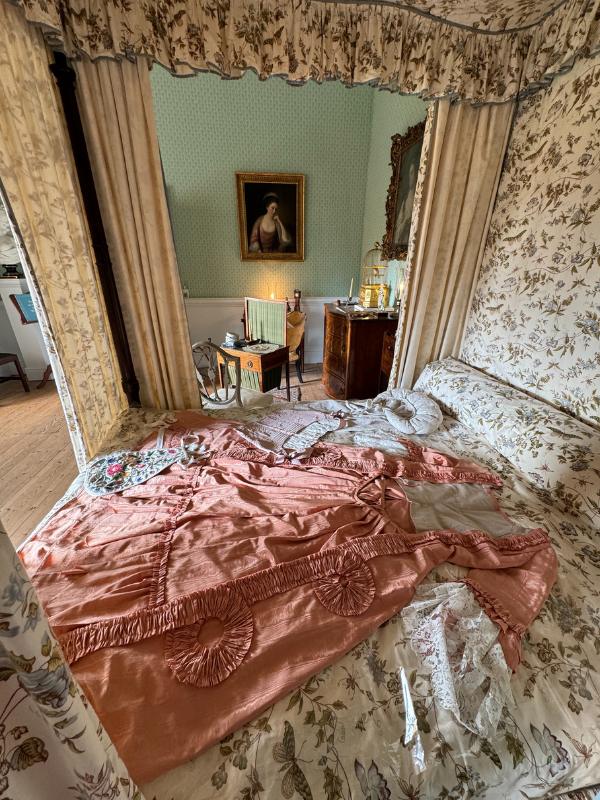
Decision Time
Here’s where your “Bath in a day itinerary” gives you a choice. If by this point you are feeling exhausted, then by all means consider catching the sightseeing hop-off hop-on bus while at the Royal Crescent and heading back toward the Royal Baths where your tour began.
On the other hand, if you are up for even more sightseeing, then on your walk back you could squeeze in two more stops. The following two stops are for those who just can’t get enough.
Seventh Stop —The Jane Austen Centre
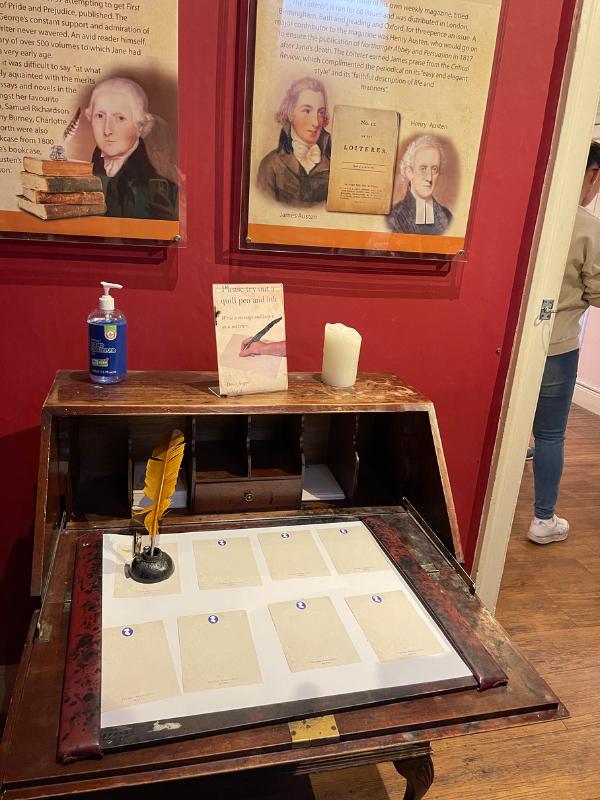

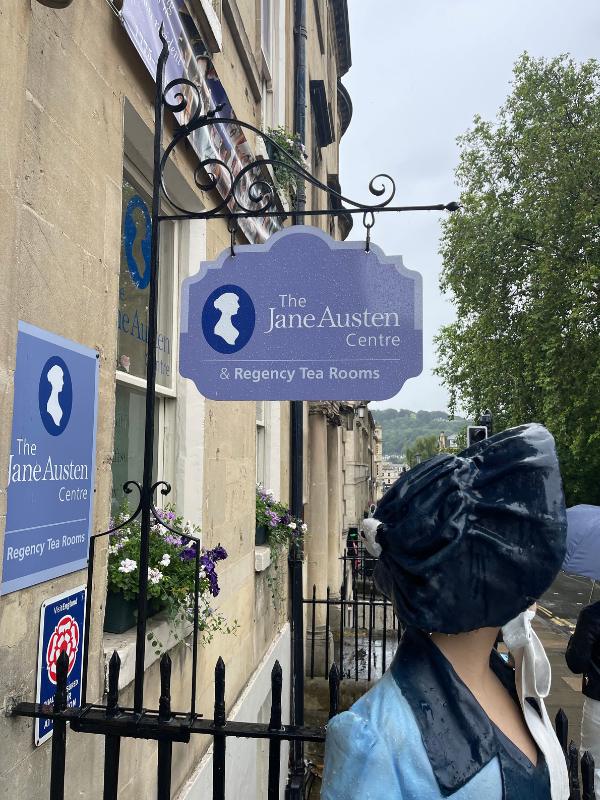
A mere seven-minute walk from the Royal Crescent is the Jane Austen Centre, a Georgian townhouse dedicated to Bath’s most famous one-time resident.
The English novelist called Bath home from 1801 through 1806 when her father moved their family there. Apparently, she wasn’t all that happy about it initially, having felt on previous visits that Bath was a frivolous place overly concerned with socializing. Her feelings changed over time, of course, but it is easy to understand why the city gave her that first impression.
When she lived there, Bath was in its heyday of being a prestigious spa resort and social centre — offering countless balls and assemblies for those who could afford it.
Her time in Bath proved influential enough on the author that she set two of her novels there, Persuasion and Northanger Abbey.
At the Jane Austen Centre, visitors can learn about everything from the food, the fashion and the society during Jane Austen’s time. There are a variety of exhibitions about her writing and what Bath was like over 200 years ago.
You can wander the museum at your own pace but there are plenty of well-informed staff members who would be delighted to answer any questions.
Eighth Stop — The Pump Room
You’ve now indulged in almost every aspect of your “One day in Bath itinerary” but haven’t had an opportunity for a little luxury. That must be remedied at once. The eighth and final stop on your tour is only a six-minute walk away at the Pump Rooms, very near the Roman Baths where your tour began.
The Pump Rooms have the distinction of being one of the most elegant venues in the city. Built in the 17th century for those elites who flocked to the area to enjoy the soothing mineral waters, today the Pump Room Restaurant is proud to offer the most delightful late afternoon tea in Bath.
Tickets to their Pump Room Afternoon Tea are £42.50 per person, but haven’t you earned it after such a long walk? A relaxing afternoon tea is a perfect end to a charming day spent enjoying everything that Bath has to offer.
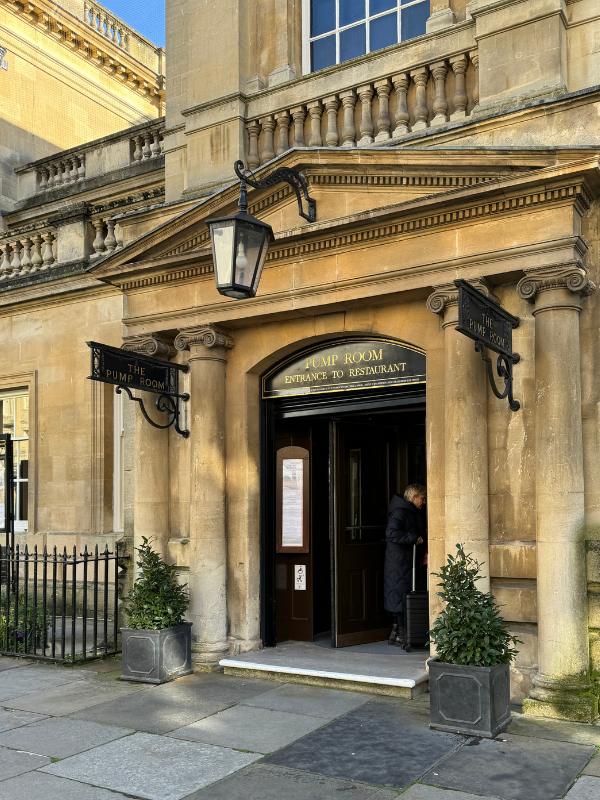
Best tickets and tours in Bath
Spending two days in Bath, a long weekend in Bath or looking for more ideas for your Bath itinerary? Find out even more of what Bath has to offer in my complete guide to places to visit in Bath!
One day in Bath Map
Practical information to help plan your Bath day trip
How to get to Bath from London
By Train
The fastest and easiest way from London to Bath is by train. Leaving from the London Paddington Station, the shortest route will take a mere 1 hour 35 minutes to Bath Spa Station.
Other routes may require a change at Swindon or Westbury and thus may take a bit longer.
Prices begin at £12.60 but will be more expensive if you travel during off-peak times. Click here for train times and tickets to Bath.
Click here for my complete guide to travelling the UK by train
Travel by Car
Driving your own car may take a little bit longer but it does offer you a great deal more flexibility when you visit Bath.
The trip from London will take approximately 2 hours 30 minutes depending on traffic. If you travel during rush hour, it could take significantly longer.
The fastest route is via Windsor but if you’re a pre-history buff, you could also travel via Stonehenge and spend a few hours exploring the mysteries of that ancient and popular site.
Keep in mind, parking within the city of Bath can be expensive.
By Bus
The most economical way to get to Bath from London is by bus. Prices start at £9.40 one-way and it will usually take around 3 hours to get there.
All you need to do is go to Victoria Coach Station in central London and board the National Express which will arrive at the Bath Spa Bus Station.
Taking a Tour

If you prefer a more structured approach to your sightseeing, you could always book a tour. A tour may be more limited than the self-guided approach but that may be exactly what you are looking for.
Below is my selection of the best day tours to Bath from London (and one 2 day tour!)
Read more – How to visit Bath from London
Skip the long lines at Stonehenge and tour the Georgian city of Bath at leisure on this guided full-day tour from London.
During this 11 hour tour, you are able to visit 3 major attractions in southern England including Windsor Castle, Stonehenge and the wonderful city of Bath.
Experience the Georgian splendour of Bath and the mystery of Stonehenge, as well as the picturesque village of Lacock (as seen in Pride and Prejudice and the Harry Potter movies) during this full-day tour.
This 2-day excursion takes you through the scenic Cotswolds and includes visits to the ancient stones of Avebury as well as the cities of Bath and Oxford.
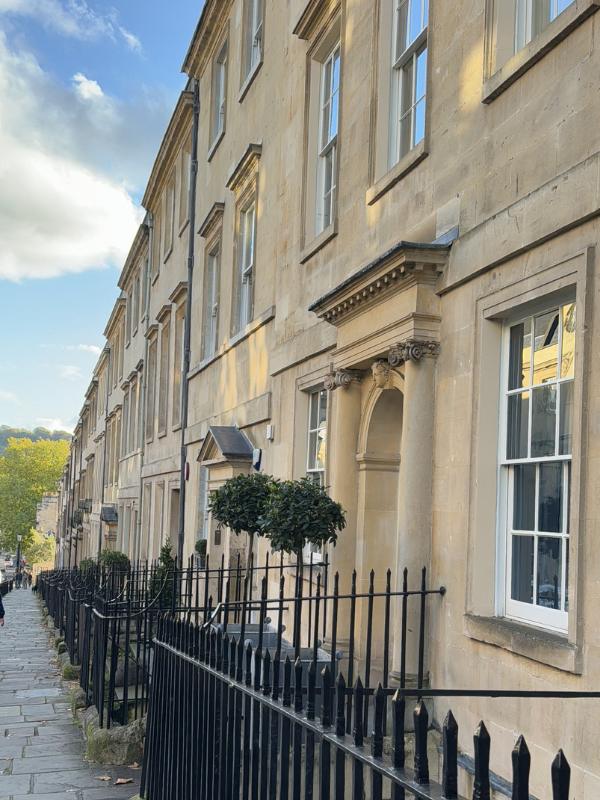
Where to stay in Bath
If after reading this itinerary you think you would prefer to spend 2 days in Bath to really soak in the city sights and atmosphere you will need to find some accommodation.
There is a myriad of options in Bath to suit all travel styles and budgets including boutique hotels, luxury spa hotels, and B&Bs.
Some recommended hotels are:
- Best boutique hotel in Bath – Hotel Indigo Bath blends modern luxury with Georgian charm, offering stylish rooms near Bath Abbey and the Roman Baths.
- Best luxury spa hotel in Bath – The Gainsborough Bath Spa is a luxury 5* hotel and the only UK hotel to have access to naturally heated thermal waters within its Spa Village.
- Best mid-range hotel in Bath – Eight is a small independent boutique hotel in the centre of Bath
- Best budget option in Bath – Grays is a boutique B&B situated in an imposing semi-detached Victorian villa located 15 minutes from the centre of Bath.
Find more accommodation options in my Bath Accommodation Guide.
Read more about visiting Bath
You can find more information to help you plan your visit to Bath in my Bath Travel Guide.
Whether you plan to spend one day in Bath, a weekend in Bath (add the thermae bath spa to your Bath itinerary and enjoy the natural hot springs) or base yourself in the city and explore the surrounding areas you will find everything you need to know to make the most of your trip in my detailed guide to the city.
For more information about what to see and do in the South West of England my guide to the region includes lots of ideas and inspiration.
BATH TRAVEL RESOURCES
Book your accommodation – Booking.com or VRBO
Book tours & tickets in Bath – Get Your Guide or Viator
Car Hire – Discover Car Hire
UK Travel Itinerary Planners Ebook – Buy here
********
Find more inspiration for your travels in my England Travel Guide which includes information about what to see, where to stay, how to get around, travel tips, recommended reading and more to make the most of your trip.
